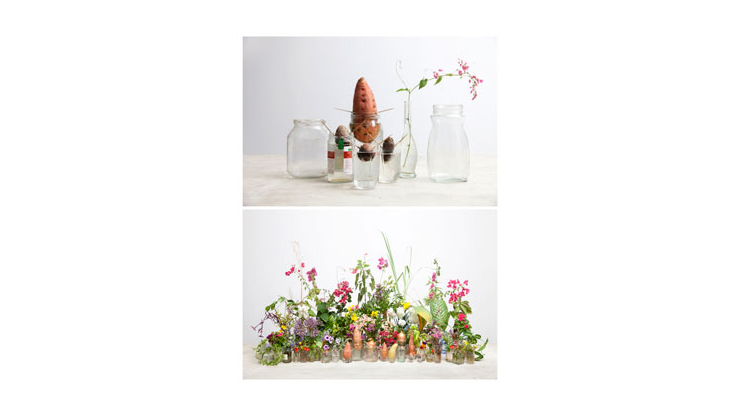The tradition of flower arrangements seeks to enhance man’s connection to nature and to the divine: the creation of a given composition requires consideration of the qualities of different plants and of the relations between them, of the character of the leaves, stems, and flowers (length, width, quantity, colors, and position in the vase), of the color, size and substance of the vase, and of its relationship to the flowers. This set of considerations is designed to awaken a greater sensibility towards beauty and harmony.
These still photographs document a specific material and mental process, while testifying to the passage of time. Like the examination of 17th-century still-life paintings, a sustained study of these images gradually shifts our attention from the beauty of the flowers to processes of rotting, withering, and wilting. Although these photographs dialogue with the tradition of still-life painting, they are devoid of the pathos that suffuses the original compositions. This absence of pathos is due to the use of empty bottles instead of vases, and to the insertion of plastic plants and sprouted root vegetables (onions, sweet potatoes) into the flower arrangement.
The memento mori (remember your mortality) motif, which was also present in historical cabinets of wonder, reminds viewers of the universal character of death, whose inevitability is accompanied by a sense of uncertainty concerning the time, place, and manner of its arrival. It is perhaps for this reason that the insistence on an everyday practice gives expression to the desire for eternal life.

Less Reading...
